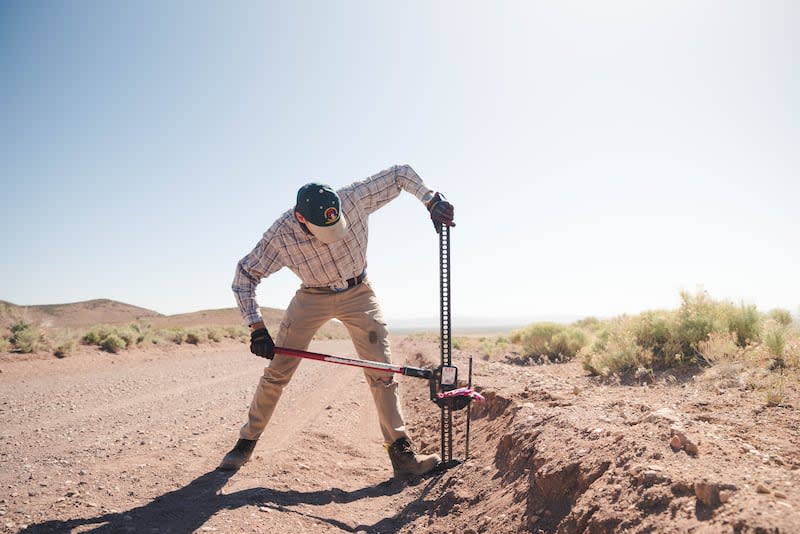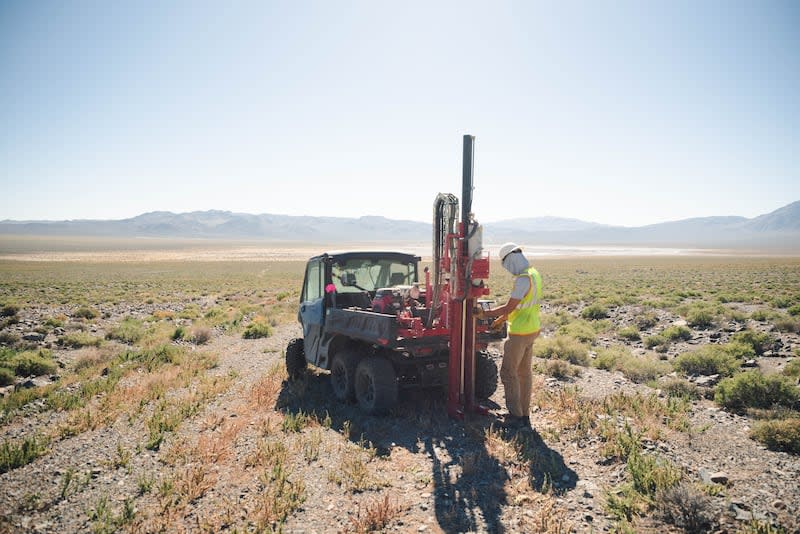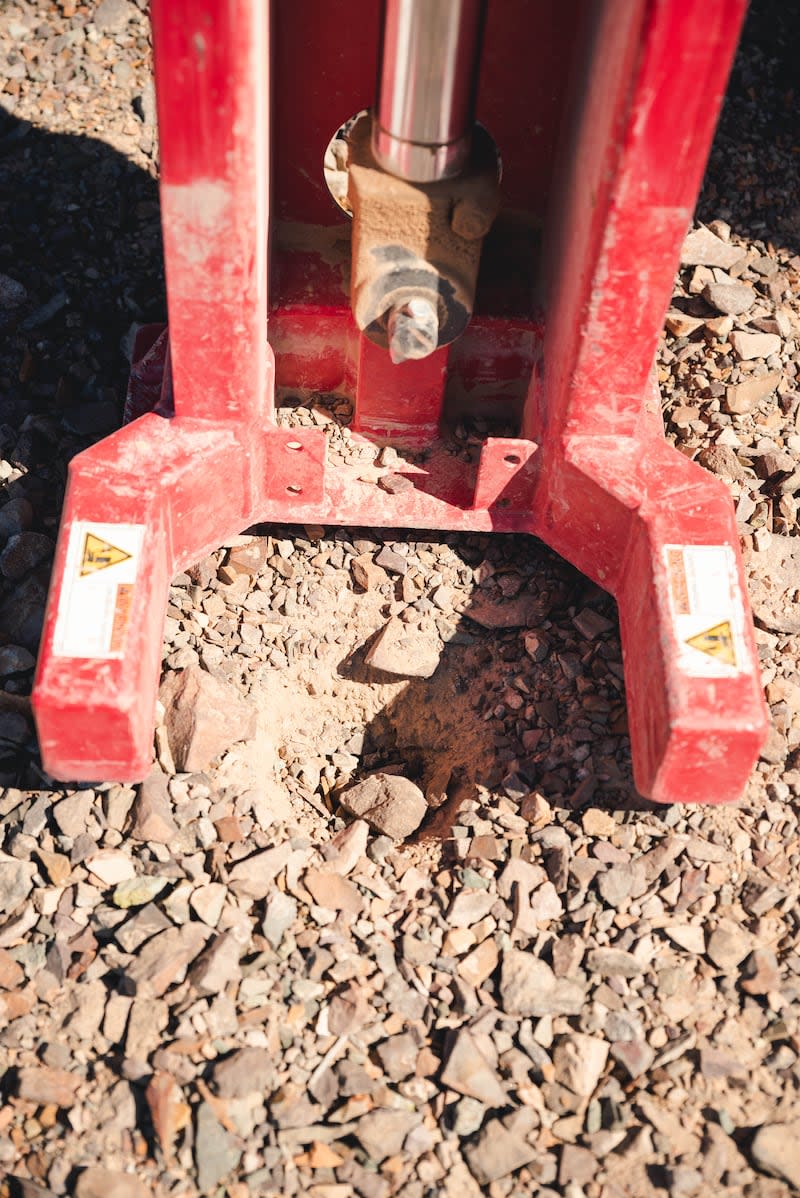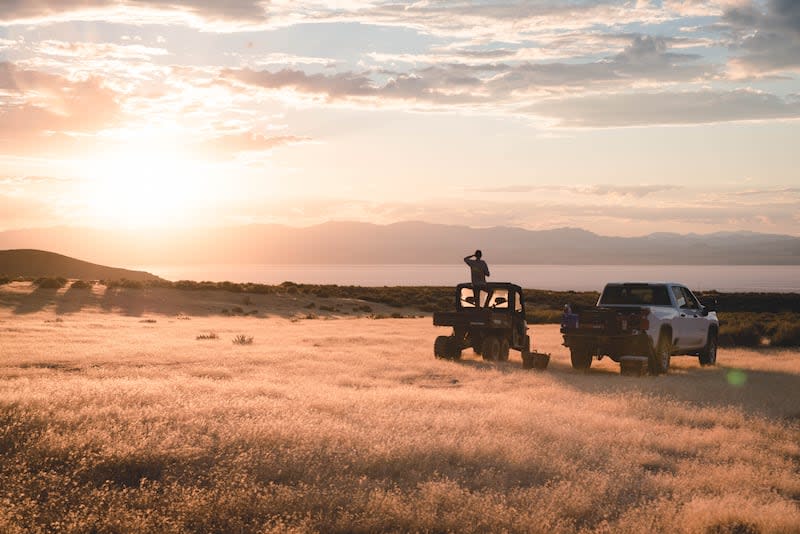It is a puzzle, a head scratcher and a source of immense frustration for both industry and elected officials. The federal leasing and permitting process for all manner of projects, be it transmission lines, highways or even carbon free energy pursuits, continues to frustrate many who are part of the process.
Take geothermal, for instance. The United States leads the world in geothermal electricity generation and out of the seven states with geothermal-based power plants, Utah ranks third — behind No. 1 California and Nevada’s second-place spot, according to the U.S. Energy Information Administration.
Utah is also home to an underground field laboratory project called FORGE, which has attracted research partners from across the globe and is led by the University of Utah’s Energy & Geoscience Institute.
On Thursday, the university announced FORGE had a hit a major milestone, successfully completing a nine-hour circulation test with its two wells to demonstrate the viability of the Enhanced Geothermal System.
Stimulating the two wells assured project leaders of their connectivity and at an efficiency rate featuring 70% recovery of the water injected into the well.
But FORGE is located entirely on Beaver County land owned by the Utah Trust Lands Administration.
Federal control, federal policies and the frustration
It’s a different story when it comes to getting things done on federal land — which is Utah’s primary landowner controlling about 30 million acres among various agencies such as the Bureau of Land Management, the U.S. Forest Service, the National Park Service and others. Utah, in fact, is second in the continental U.S. — behind Nevada — for the land owned and controlled by federal agencies.
Despite being a carbon free and abundant source of energy in Utah, tapping geothermal resources working through the Bureau of Land Management is likened by some in the industry as a nagging, painful canker sore that presents no cure.
In 2021, the BLM Utah office indicated nominations of “areas of interest” for geothermal leases were to be submitted during a three-month window that year. Industry responded and collectively nominated 177,000 acres.
Geothermal Rising, an advocate for the industry and trade association, said operators spent years on technical due diligence within the acres nominated, allocating significant time and capital to researching and generating the potential prospects. Additionally, the operators have planned capital expenditures in 2023 and 2024 for surveys and exploration drilling activities within the nominated acres.
Abruptly, the BLM Utah office said it was deferring any of those leases until October 2025, representing what the group characterized as a “drastic change.”
Years ago, one company nominated its areas of interest on Forest Service land, but the BLM has oversight of subsurface geothermal activity.
Geothermal Rising noted that the nomination of those parcels was submitted in 2008 and went on to stress that more than seven years had passed since the environmental assessment was completed and 15 years since the original nomination.
Geothermal Rising addressed these concerns and others in a letter to Utah BLM Director Greg Sheehan, who did not respond. Instead, Joe Mendez, acting associate state director with the Utah office, had this response in part.
“BLM Utah understands and appreciates your concerns and is working diligently to accommodate your request. There are capacity complexities with our extensive workload that we are currently addressing. Please be patient as we continue to strive to meet your expectations placed upon the BLM.”
The BLM also did not respond to a Deseret News request for comment.
Stephen Bloch, legal director of the Southern Utah Wilderness Association, said workload is part of the problem and blamed it on Republicans in Congress.
“In many cases, perceived delays over energy and infrastructure projects are more about a lack of capacity in federal agencies — in large part because of Republicans’ refusal to fully fund those agencies — or incomplete information by a project applicant rather than public comment periods or the approval process that agencies must go through to authorize a particular project,” Bloch said.





Industry sits on its hands in Utah, while Nevada moves forward
Wes Adams, head of land with Zanskar Geothermal & Minerals, said inaction by the BLM and its inconsistencies are chasing potential geothermal development out of the state.
Nevada has quarterly lease sales of acreage for potential geothermal development each year and its BLM offices are responsive on industry nominations.
“That’s putting a lot of our focus in in Nevada for exploration, and everyone else, and so then you are creating a bottleneck there because everyone has to go to Nevada because they can’t go to Utah.”
Adams did say that the BLM offered up a few thousand acres in 2022 and 2023 — out of the 177,000 acres nominated.
Within the industry, the minimal communication, lack of clarity and deferred auctions sends a strong signal to companies and its investors — and it is not a good one.
“Our average project takes five years to get into development. There’s a lot of risk and a lot of capital requirements. And whenever you start bringing in project finance, you know, uncertainty and delays can really chill that investment,” Adams said. “It’s a little frustrating because we spent so much time and money reviewing these lands and you know, the due diligence on geology and administrative work to nominate them and submit them. It’s a lot of time and money and it is disheartening to have it just fall flat.”
Adams said industry has tried to be diplomatic with the BLM but the lack of communication has left operators frustrated.
“It doesn’t seem like there’s much concern or urgency for the Utah BLM to hold that sale,” which he said is curious given the Biden’s administration push for clean energy.
“If you want baseload renewable geothermal on public lands you need to start dedicating more resources to making that happen. And geothermal is a baseload, carbon free source,” Adams said.
But Bloch said federal agencies engage in a public participation process that requires important feedback.
“Public participation and engagement in federal decision-making for energy and energy infrastructure projects ensures federal agencies are making fully informed decisions about what happens on public lands in Utah and across the West,” Bloch said.
“Whether that input is from private landowners, local and state government, or interested members of the public, Congress has made clear that federal agencies need to solicit and then take this information into account when making decisions,” he said. “It’s a general rule of thumb that agency decisions are improved by engaging with all stakeholders whose concerns or issues about a particular project can usually be addressed proactively, and without the need for expensive delays or lawsuits.”
It’s not just geothermal projects facing delays
Federal leasing of oil and gas in Utah is diminishing and the industry has been moving development to state or privately owned lands.
Kathleen Sgamma, president of the Western Energy Alliance representing independent, small producers in several Western states, said the federal leasing and permitting program is rife with uncertainty.
“It’s so unpredictable,” she said. “The administration is not even doing the bare minimum since they have skipped lease sales all the time. They haven’t held quarterly lease sales for every state since the beginning of the Biden administration.”
The Interior Department also implemented a $5 fee for each acre in which producers express an interest — and there is no guarantee the land will even come up for a lease sale. So, if a producer nominates 5,000 acres for the auction, the interest fee would be $25,000. And Sgamma said the money is nonrefundable. Like geothermal, it takes years to get the process rolling, she added.
“You can be held up for years waiting for a lease to come up and then let’s say if it does, if it is litigated — which almost all of them have been since 2016 — then you can have the BLM saying well, we’re uncertain what this litigation is going to look like so we’re just going to hold up your application to drill permit.”
In contrast, when a request to approve drilling applications comes before the Utah Division of Oil, Gas and Mining, it conducts a technical review and site visit for its environmental assessment. The reviews examine local and regional data, including geological assessments, soil properties, water sources, existing infrastructure, impacts on wildlife and habitat, local regulations, and well spacing requirements, the agency said.
“The division strives to conduct a thorough review of APDs in a timely manner. We have made tremendous progress in the past few years. In the calendar year 2023, APD review averaged 63 days, nearly half the time required in 2022, continuing a five-year trend of improved timeliness,” said Division of Oil, Gas and Mining Deputy Director Bart Kettle.. “Currently, in 2024, APD review is averaging 43 days.”
When producers, be it wind, solar, geothermal or oil and gas, come before the School Trust Lands Administration, it negotiates with companies and if it gets to a place where the administration is comfortable, it brings the proposal for its board of trustees to enter into an exploration agreement with an option to lease with the company.
Stephanie Barber-Renteria, the administration’s managing director energy and minerals, said sites are reviewed for their potential to impact imperiled species, mitigation measures are put in place and the administration has its own team of archaeologists to consider potential ramifications for cultural resources.
“I feel like the BLM is super slow because they wear so many hats. They own the land and they are the lessor and they are also the regulatory body and have to go through the National Environmental Policy Act for the environmental reviews to check off every box.”
With trust lands, if the parcel is deemed promising enough for oil and gas production, it is kicked over to the Division of Oil, Gas and Mining for the application to drill permit. If it is for geothermal, then it falls to the Utah Division of Water Rights to determine if there is sufficient water. Geothermal projects typically drill thousands of feet below land and the water table on which agricultural activities depend. What they end up using is typically nonpotable brackish water.
Troubles with transmission lines and highways
The TransWest Express project is a 732-mile long high-voltage transmission line that crosses portions of four states in the West: Wyoming, a slice of Colorado, Utah and ending in Nevada. It taps Wyoming’s rich wind resources for the eventual delivery of carbon-free electricity for millions of homes and businesses.
It filed a right-of-way application in 2008 and nine years later, it was granted the right-of-way approval. Then, it took the company another five years to complete the requirements for the right-of-way to get permission to move ahead with construction. That approval was granted in 2023.
Other significant transmission projects have encountered similar federal delays that have spanned a decade or more and in the interim, energy grid security has been an issue of concern in the country and the costs of such projects continue to escalate, subject to the same sort of supply and inflation challenges facing the nation.
And then there’s the Northern Corridor planned in Washington County. Leaders there say it has been on the “drawing board” for decades.
In 2021, the Bureau of Land Management and the U.S. Fish and Wildlife granted approval for a 3.9-mile, four-lane highway to proceed in Washington County.
Then last year, as part of a settlement agreement with conservations groups that had sued the agency over construction of the highway, the federal agencies announced they were going to revisit their decision and conduct a new review.
Legislation in 2009 had set aside land for a conservation area to help protect the desert tortoise — a move elected leaders thought at the time would help facilitate construction of the highway that traverses the Red Cliffs Conservation Area. Now, it appears that move aimed at reconciliation has fallen flat, leaving elected officials steaming.
In a congressional field hearing in April this year, Rep, John Curtis, R-Utah, criticized current restraints and federal agencies’ inaction.
“I’ve driven around the state. Sometimes as I’ve been on a road, I think of I-70 as an example, where I asked myself, ‘Would this ever be built today?’”
He asked Carlos Braceras, executive director of the Utah Department of Transportation: “If we used the same standards we were using for the Northern Corridor, how would transportation in Utah look?”
Braceras’ reply?
“It’s hard to imagine we could do the things that we need to do to support our economy, our society,” Braceras replied. “Today, it seems like it’s much harder to do things that matter.”
Signup bonus from



